Abstract
Certain U.S. racial and ethnic minority groups traditionally have been underrepresented in the health professions. There have been significantly smaller proportions of health professionals who are blacks, Hispanics, and American Indians than members of those groups in the population at large. In the 1960s and 1970s various pieces of legislation were passed that were intended to increase the total number of health professionals and address the underrepresentation of minorities and other disadvantaged persons. The Special Health Careers Opportunity Grant (SHCOG) Program and its successor, the Health Careers Opportunity Program (HCOP) have had, as their specific charge, responsibility for awarding funds to undergraduate colleges, health professions schools, and other entities to increase the number of minority students admitted to, and graduated from, health professions schools. Since 1972, during the existence of the SHCOG and HCOP Programs, the number of black students in health professions schools has risen from 4,099 to nearly 6,000. The number of Hispanic students has doubled to more than 2,360 and that of American Indian health professions students has increased from 125 to 355. Minority student applicants to medical school have improved their scores on the medical college admission test (MCAT) and their mean grade point average (GPA) at a higher rate than nonminority students. Students from HCOP-supported schools had higher acceptance rates--even with lower MCAT and GPA scores--than students from schools lacking HCOP support.
Full text
PDF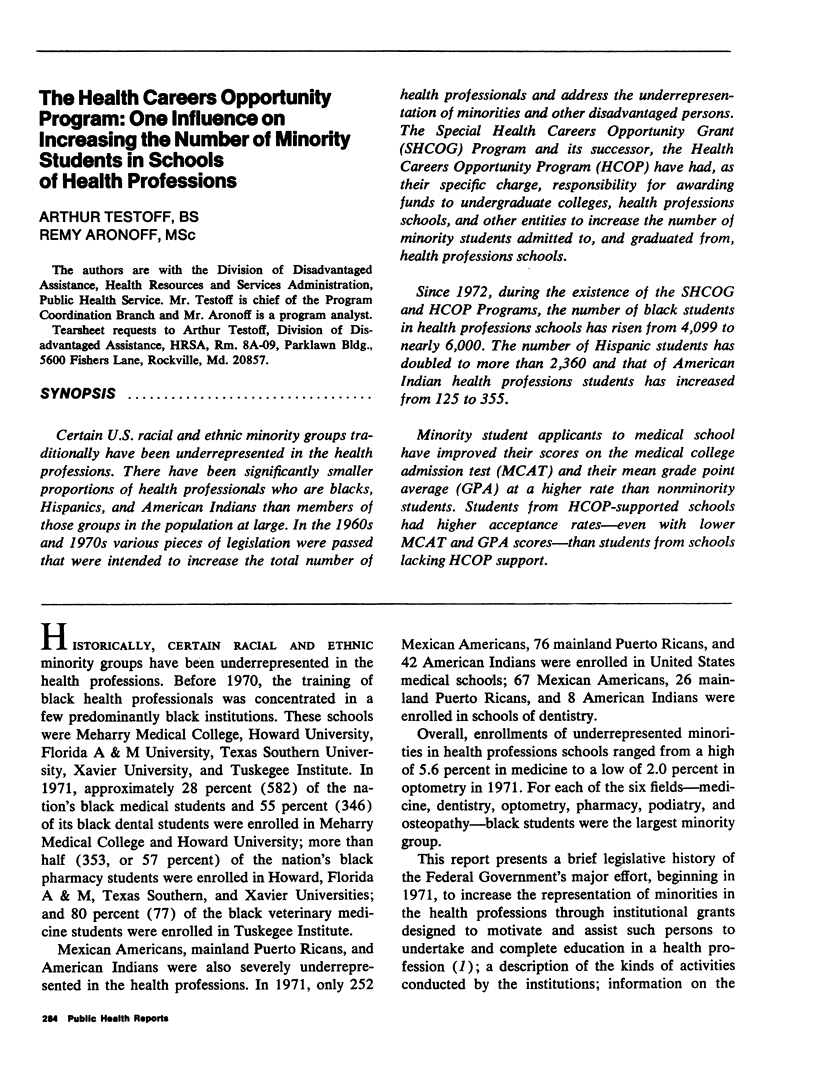
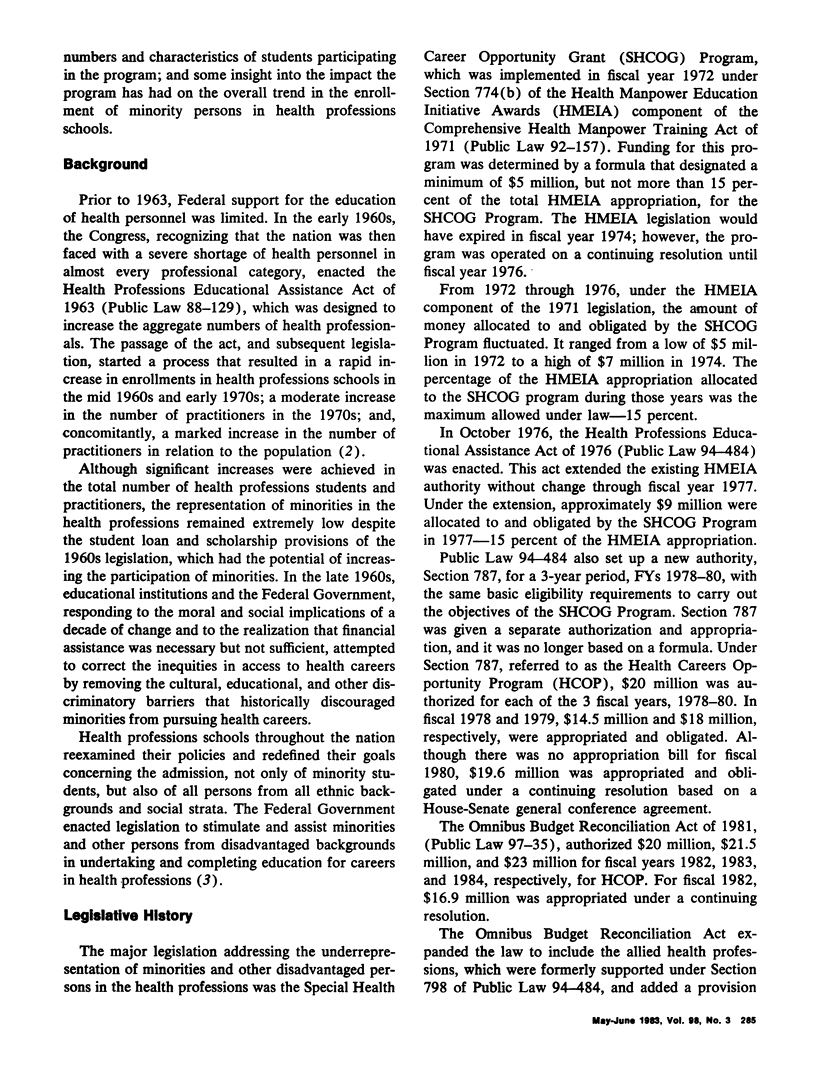
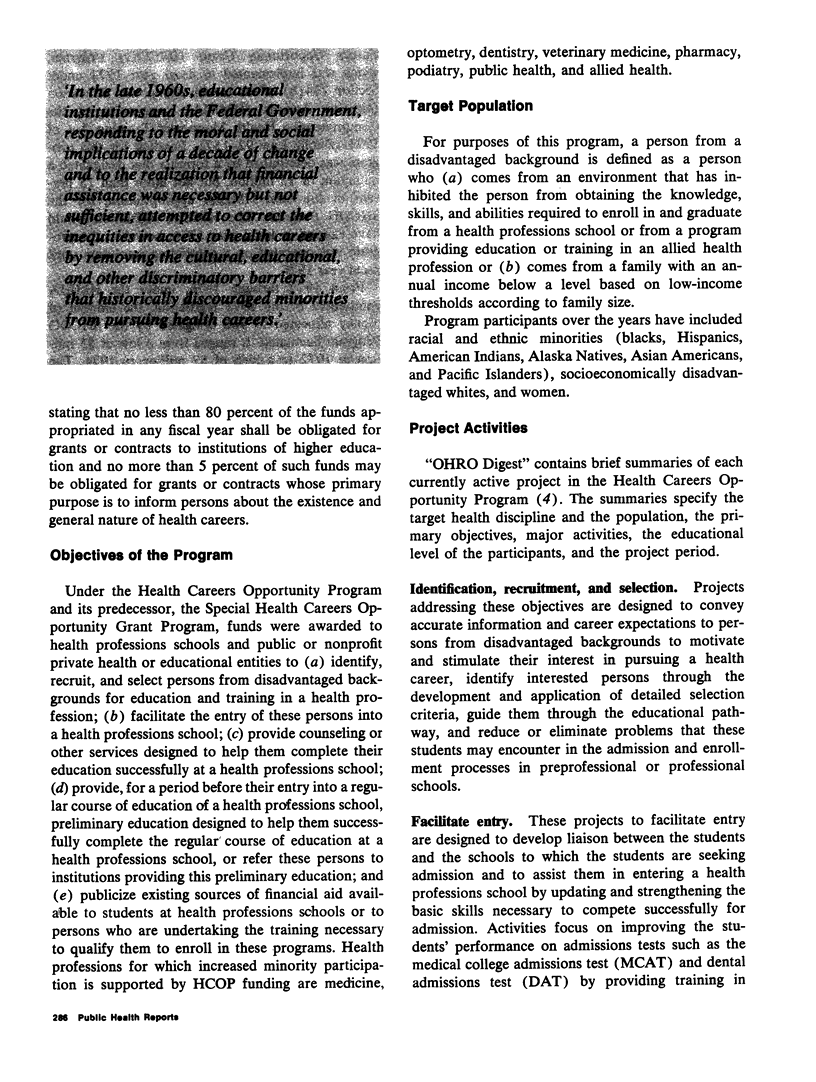
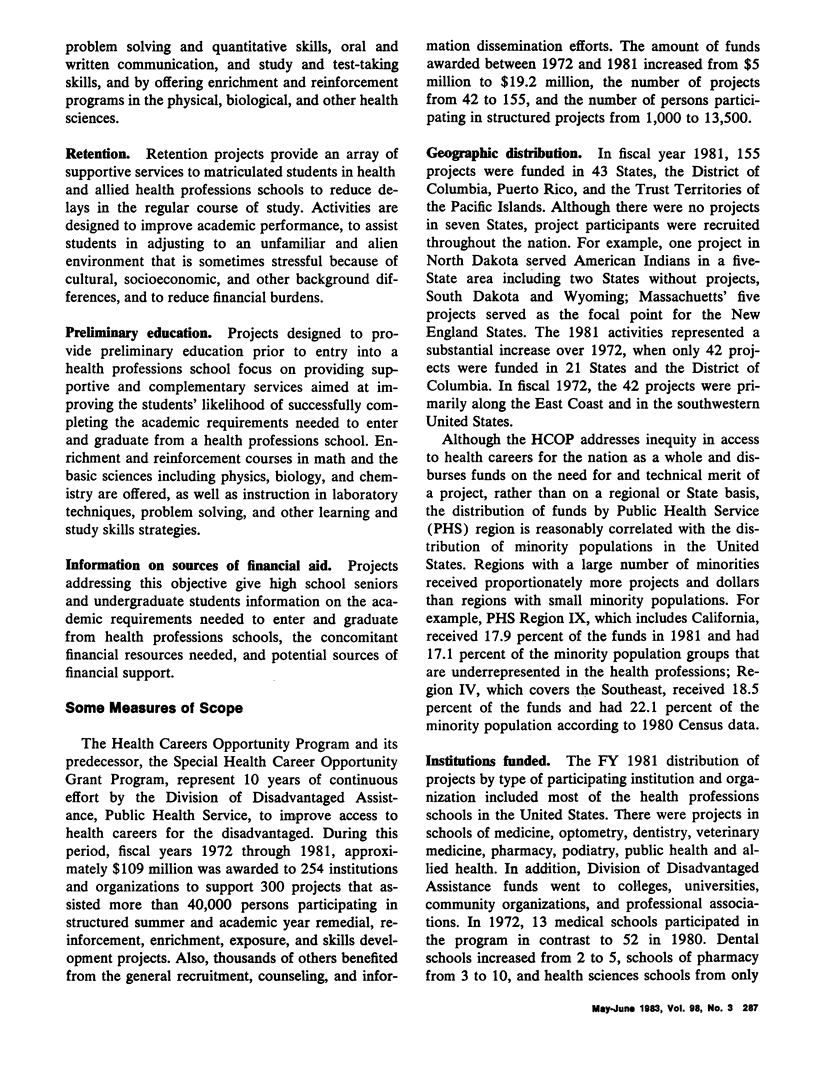
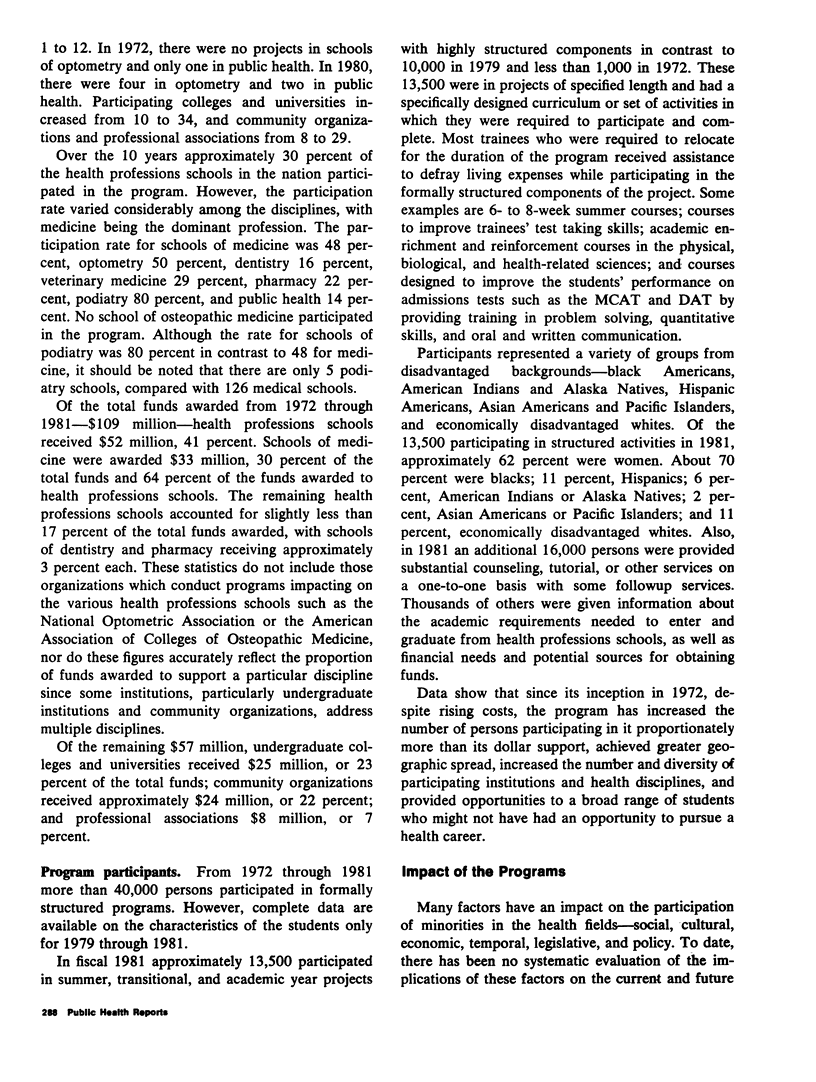
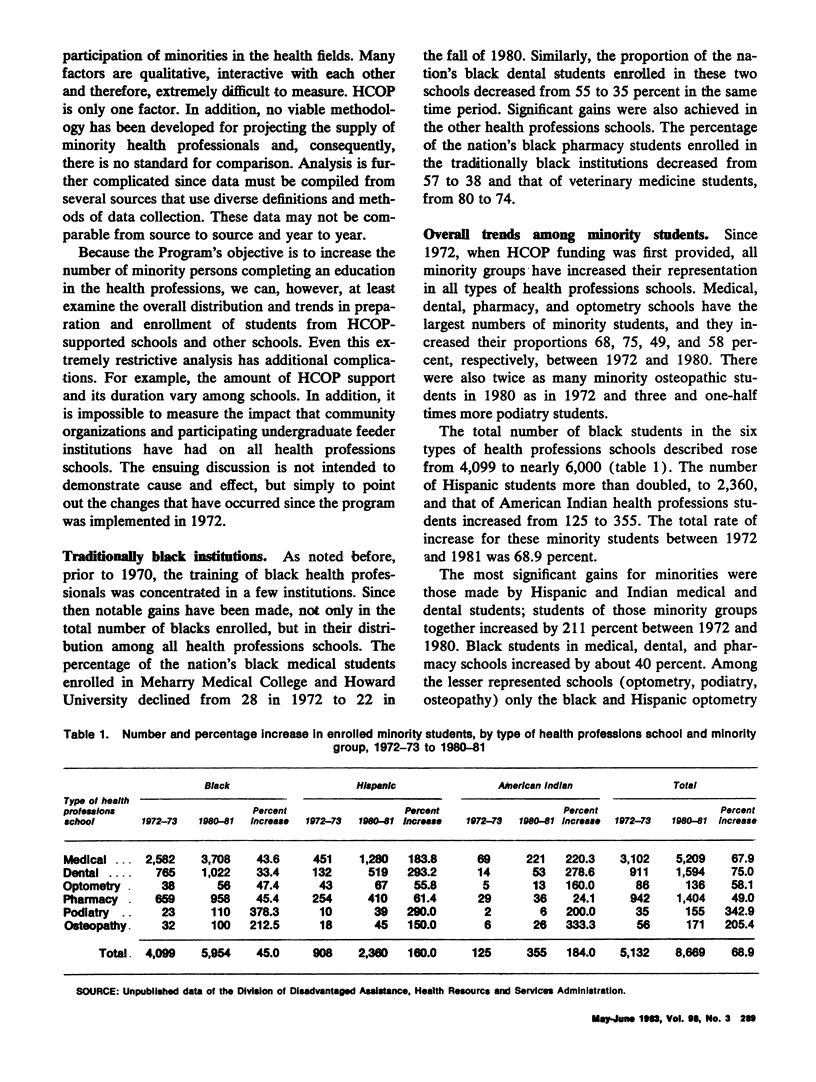
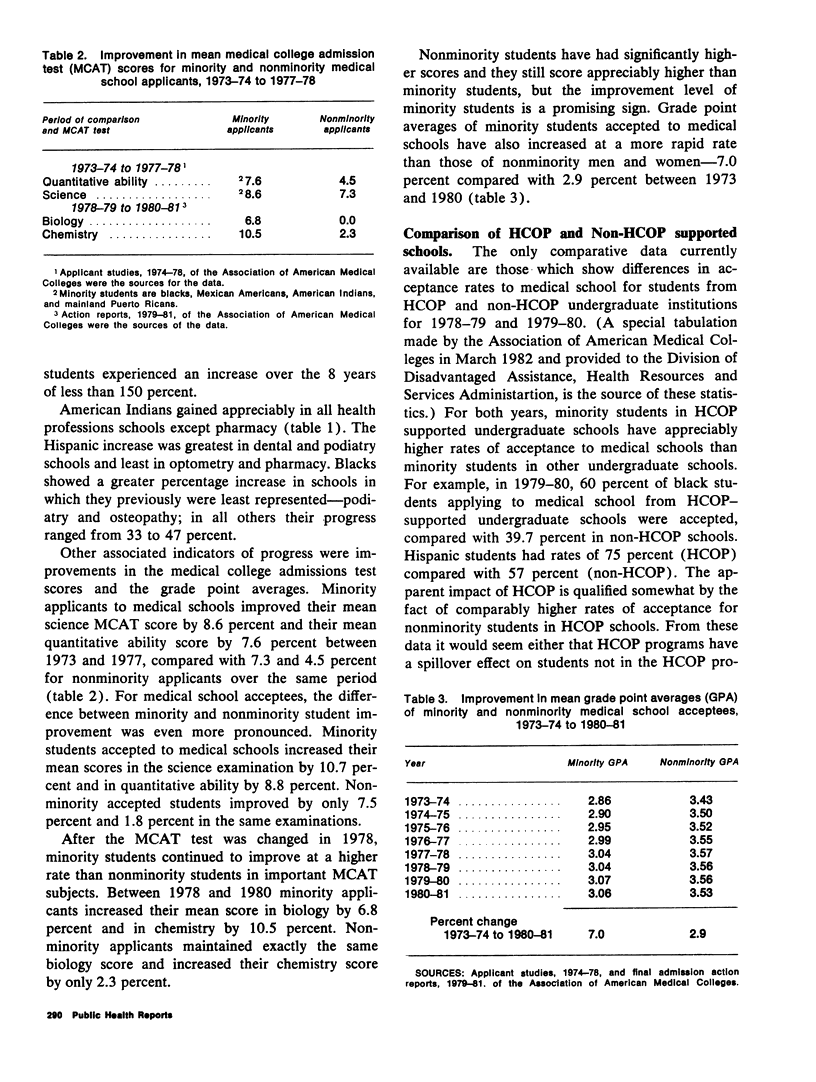
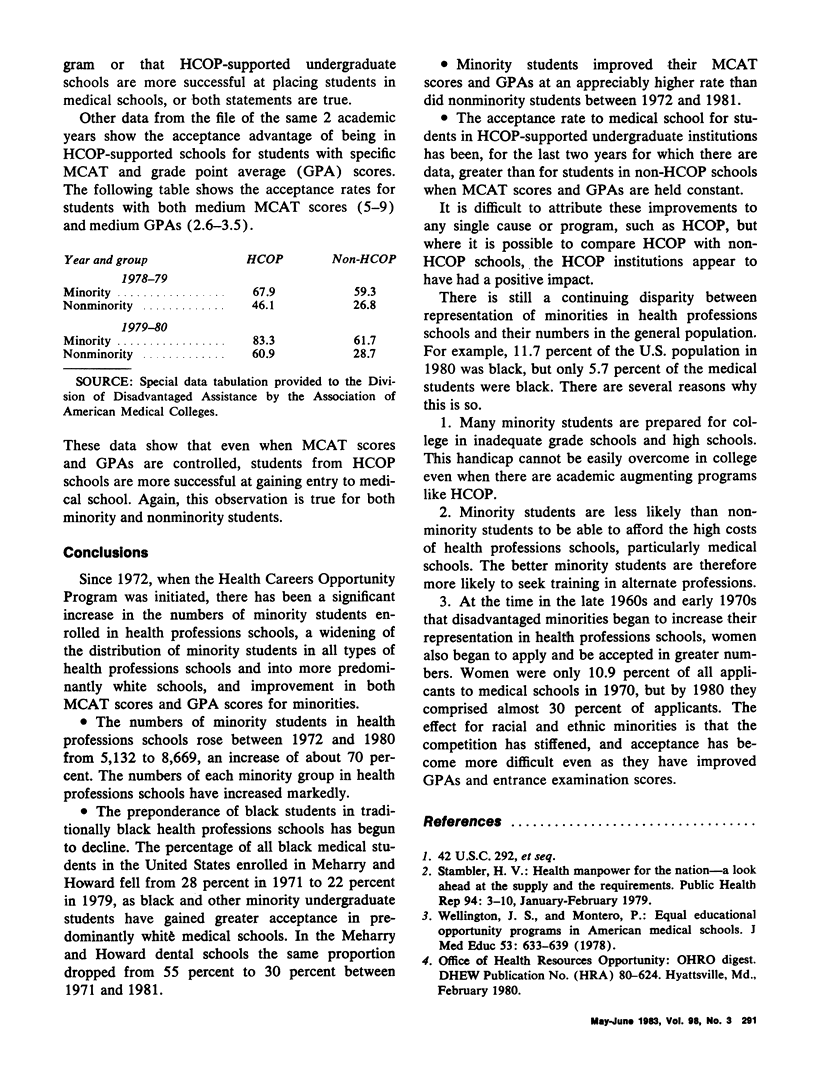
Selected References
These references are in PubMed. This may not be the complete list of references from this article.
- Stambler H. V. Health manpower for the nation--a look ahead at the supply and the requirements. Public Health Rep. 1979 Jan-Feb;94(1):3–10. [PMC free article] [PubMed] [Google Scholar]
- Wellington J. S., Montero P. Equal educational opportunity programs in American medical schools. J Med Educ. 1978 Aug;53(8):633–639. doi: 10.1097/00001888-197808000-00002. [DOI] [PubMed] [Google Scholar]


